NevadaToday
Up in Smoke University Ecologists Help Firefighters Protect Nevada's Lands
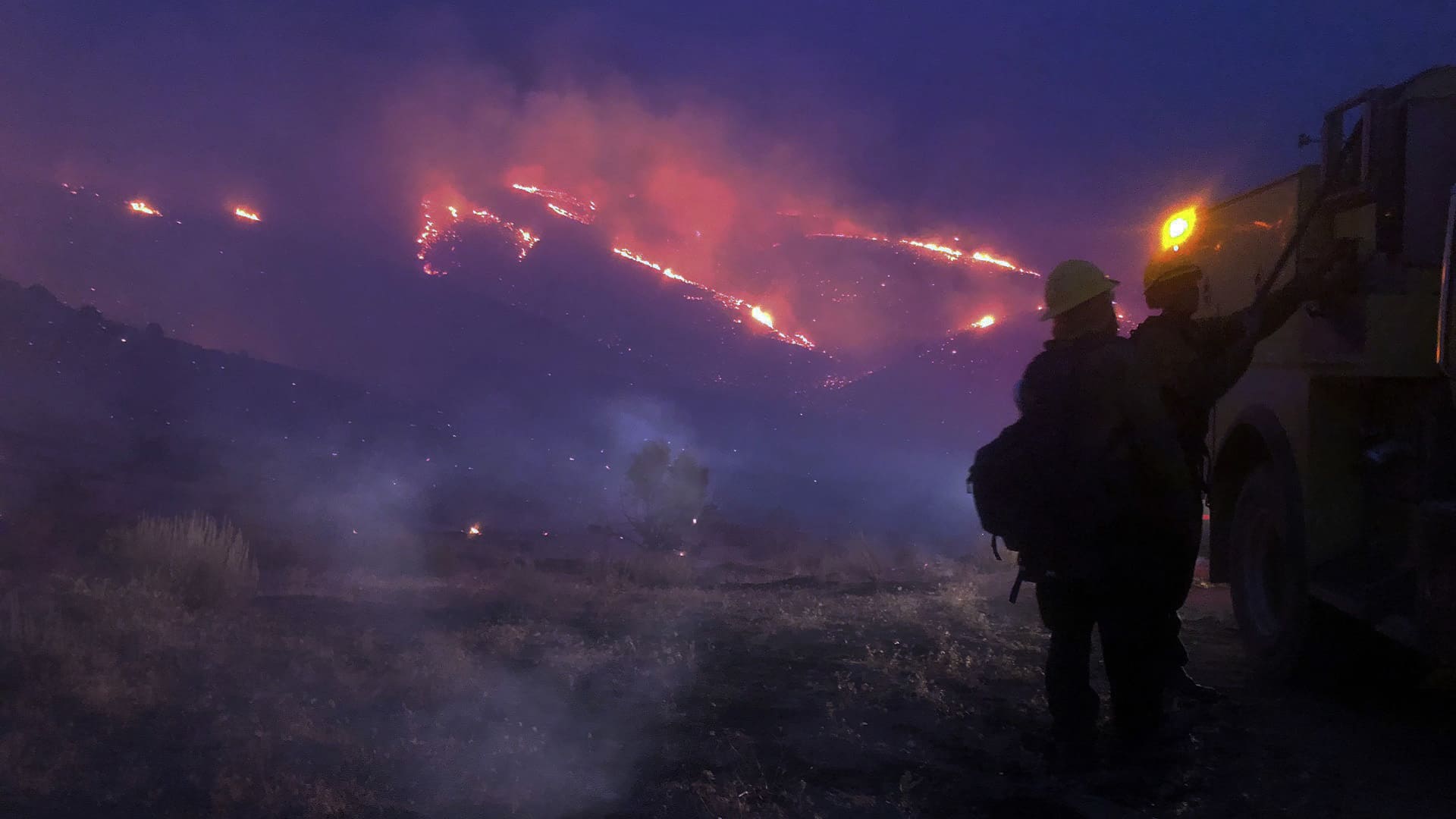
Up in Smoke
Nevada lands are no stranger to fire. Last year, two fires burned nearly one million acres. The year before, 1.3 million acres burned. In the last 20 years, more than 20 fires greater than 100,000 acres raged.
Nevada lands are now more vulnerable to future fires
These fires unleashed devastating losses on ranches, grazing areas, and habitat for wildlife and recreation. In their wake, Nevada lands are now more vulnerable to future fires.
Knowing how to care for Nevada's land before and after it is affected by fire and other disturbances is key to reducing wildland fire risk and repairing lands post-fire. This is where two experts, Tamzen Stringham and Devon Snyder, and the land managers they teach come in.
Modeling the future
Stringham is a professor and Snyder is an ecologist with the College of Agriculture, Biotechnology & Natural Resources at University of Nevada, Reno. With support from the College's Nevada Agricultural Experiment Station, Stringham leads and Snyder works in the College's Rangeland Ecology Lab.
The lab's scientists have conducted and distilled decades of rangeland ecology research
The lab's scientists have conducted and distilled decades of rangeland ecology research into what firefighters would call clear text or plain language. They put it into documents known as state-and-transition models, which describe how different combinations of plants and soil respond to events like fire, grazing, soil disturbances and invasive plants. The models also describe, when recovery is possible, pathways to help restore lands.
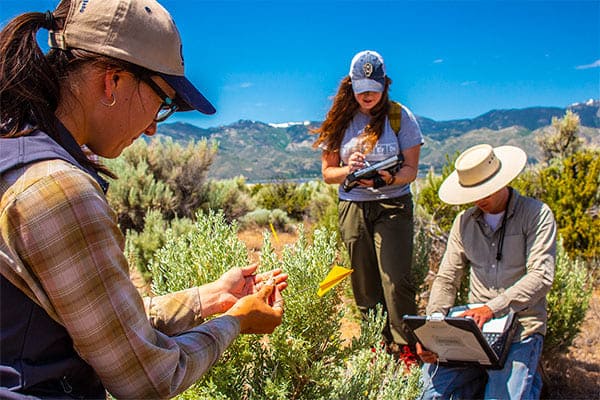
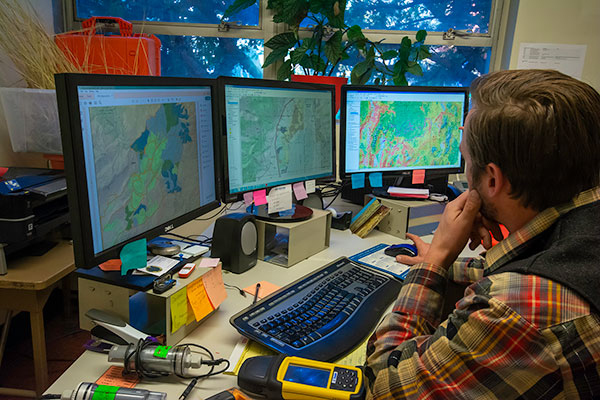
A major fire problem
To help get these models into the hands of those who protect and restore Nevada's lands, Stringham and Snyder used the models this spring to teach a course to wildland firefighters with the U.S. Department of InteriorBureau of Land Management Nevada.
The training was much needed, not only by Nevada's lands but its workforce too.
The Department, a government agency that uses science to manage and sustain America's lands, water and wildlife, rolled out new biological science credit requirements for employees. The new regulations apply to the Department's fire program management specialists, including those who work for the Bureau in Nevada to manage nearly 48 million acres of public lands.
For professionals who manage rangeland to change how fire behaves, it is increasingly important to know about both fire behavior and how animals and plants interact with each other and the range. So, this change is a good one, but the required education has a downside.
Josh Henry is a fire operations supervisor with the Bureau. He is often the duty officer for the Winnemucca District, and all fire operations run through him.
"My goal is to be a district fire management officer after being an assistant fire management officer for a few years," Henry said. "I have to have enough credits in order to qualify for these jobs. That was not the case a year ago."
Most of the agency's workforce whose next step up is to become specialists no longer can without seeking out the required training
Now, like Henry, most of the agency's workforce whose next step up is to become specialists no longer can without seeking out the required training.
"Not even if they’re otherwise qualified via many years of on-the-job experience with the agency," Snyder said.
Without qualified candidates, it would be hard for the Bureau to reduce Nevada rangeland's likelihood of ignition and, should a fire start, to ensure adequate firefighting resources and leadership to minimize damage.
Fortifying firefighters
Nevada State Fire Management Officer Paul Petersen asked Stringham to provide an educational program to meet the new requirements.
"What's better to teach Nevada land issues than University of Nevada, Reno," Petersen said. "It already has a large knowledge base of Great Basin and Nevada issues, climatology and range types. And it's a great opportunity to partner with a land-grant college. We're a land management agency."
While programs for specialists who work in forested areas already existed, a training for arid-land professionals didn't. The training Petersen asked Stringham for was a novel one.
"This is the first one that's focused on Great Basin and high-desert ecology and fire ecology, which is important for our firefighters because that's where they work," Petersen said.
The curriculum wasn't the only innovation. A traditional semester-long 3-credit University course does not fit into a wildland fire specialists' busy life or Nevada's fire season, so, the timetable is new, too.
"In an 18-month schedule, these employees will get 24 credits in range management and range ecology," Petersen said. "They'll do a three-credit class in two weeks about every other month."
The educational endeavor is called the Rangeland Ecology and Fire Ecology Program. Program classes include Rangeland Vegetation Measurements, Soil Science, Range and Forest Plants, and Wildlife Ecology and Management courses, among others.
The program started spring 2019, leading the way in educating professionals who work on arid lands. It benefits firefighters, their careers, the agency that employs them and the dry lands where they work in Nevada and beyond. It might also help facilitate cross-discipline understanding between fire professionals and rangeland ecologists to the benefit of the lands they are tasked to protect and manage
Hitting the Books
Stringham and Snyder taught the program's first course, Rangeland Resource Management, at the Bureau's office in Carson City.
"We had 36 students and all were professional and highly engaged," Stringham said.
All were from a federal agency fire program. Most worked right here in Nevada.
"We're really excited about this partnership," Petersen said. "It's not only for our students in Nevada. We also had students from outside of Nevada, [Bureau] employees throughout the western United States."
The students who didn't work in Nevada hailed from Arizona, California, Idaho, New Mexico and Oregon. All studied the changes that happen over time on and below the earth's surface; how soil develops; how to identify plants; how soil, climate and plants interact to form ecosystems; and how arid-land ecosystems respond to disturbance events.
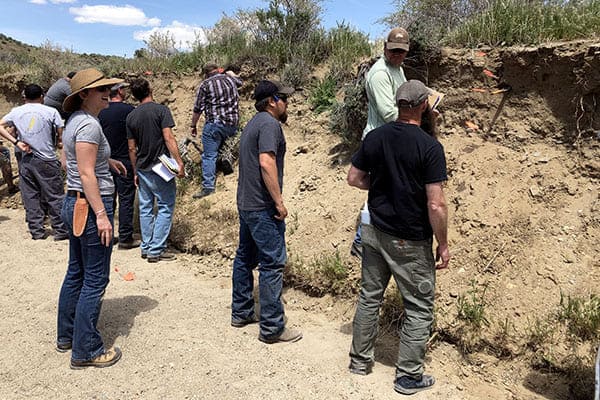
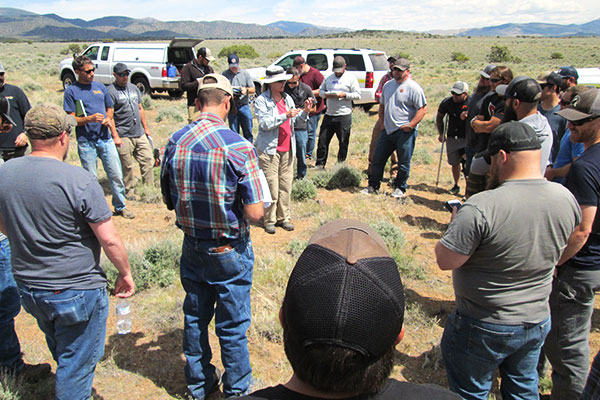
Some of the students didn't have much prior experience with college coursework, but they rose to the occasion and did well
"Some of the students didn’t have much prior experience with college coursework, but they rose to the occasion and did well," Snyder said.
In the lab and field, they practiced what they studied. They identified landforms, dug soil pits, determined soil texture, and identified plants and ecological sites. Time in the field was fun, engaging and brought home to students just how much a land's management and disturbance history influences which plants grow there. All of which will guide their on-the-job decisions.
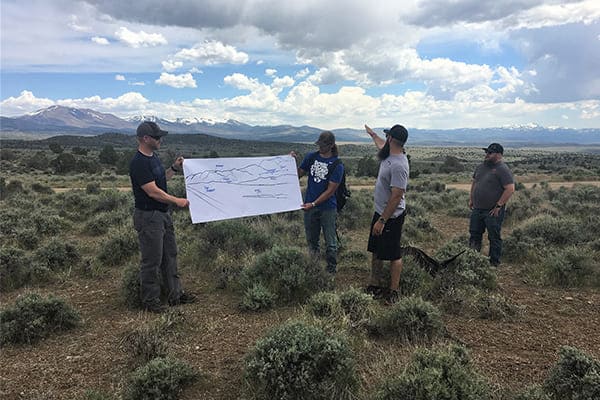
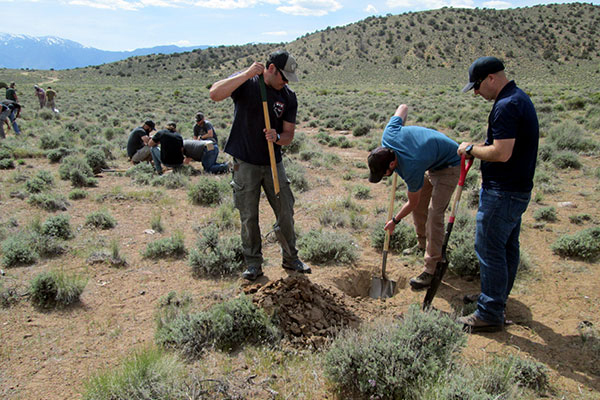
"It has greatly expanded their knowledge," Petersen said. "They really enjoyed it."
The course culminated with a trip to the Pine Nut Mountains. Land there was changed by experts to reduce the likelihood of fire, and to make fires that may happen there less damaging and more easily controlled. Students worked in groups to critique and improve upon the management of the area.
"It was an excellent experience," Stringham said.
A Fine Addition
Because the program is brand new, collecting feedback from students and program partners during and after the course was even more essential than usual. As hoped, the class made students better at their jobs, future and present.
"It's important for us to develop our employees and get them these classes because it benefits their future careers and ability to qualify for positions," Petersen said. "With the knowledge of what's going on on the ground with the ecology, plants and wildlife, it helps them in their current job as well."
And students are keeping in touch with the instructors.
"I have heard from many since the class indicating their satisfaction and demonstrating the knowledge they learned," Stringham said.
The instructors also enjoyed the class.
This was the most rewarding teaching experience I've had
"The class was engaged and took the course very seriously," Snyder said. "The wildland fire community is tight knit and the comradery in the classroom showed it; everyone worked together and seemed to enjoy themselves even while being challenged by the coursework. This was the most rewarding teaching experience I've had."
Fire photos courtesy of Bureau of Land Management Nevada
Up in smoke photo by Brandon Dunham | Fortifying firefighters photo by Naaman Horn



